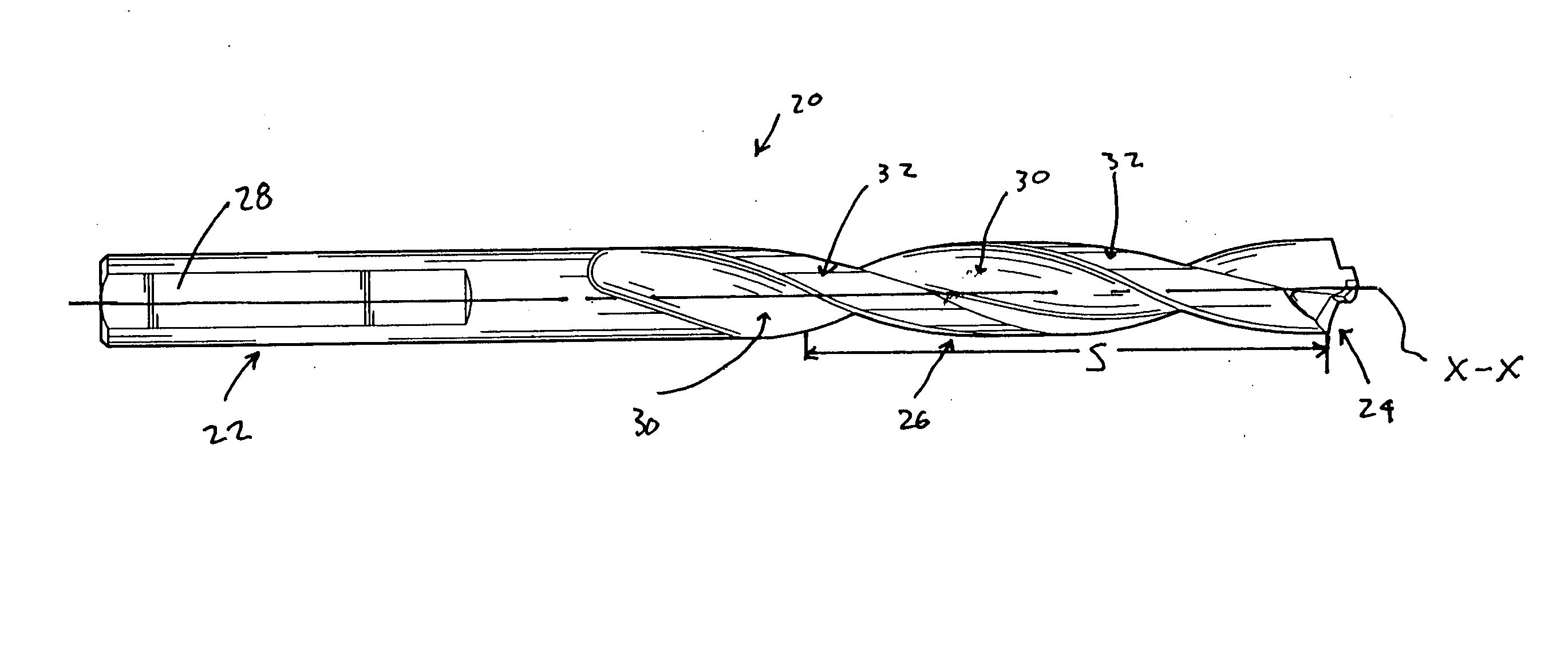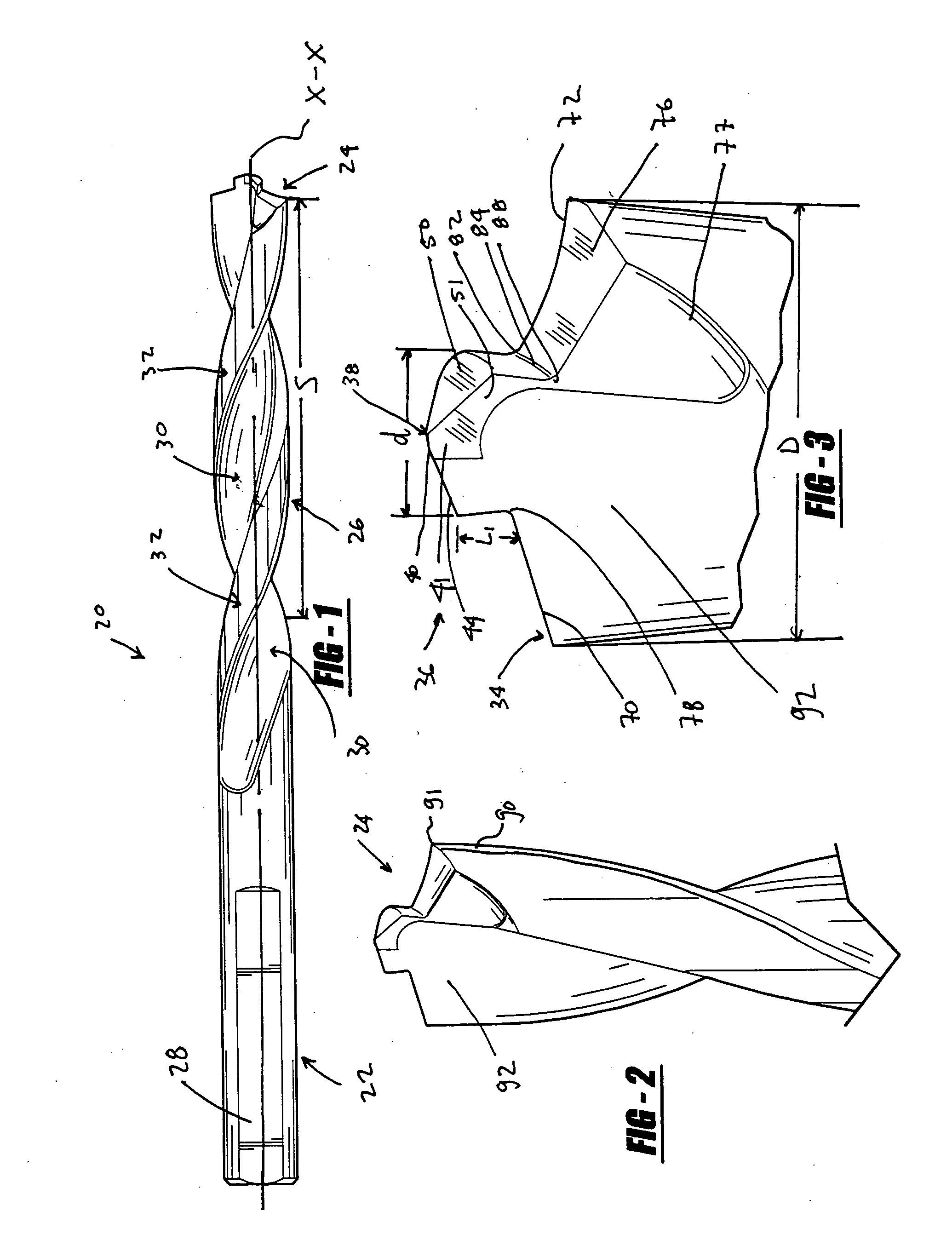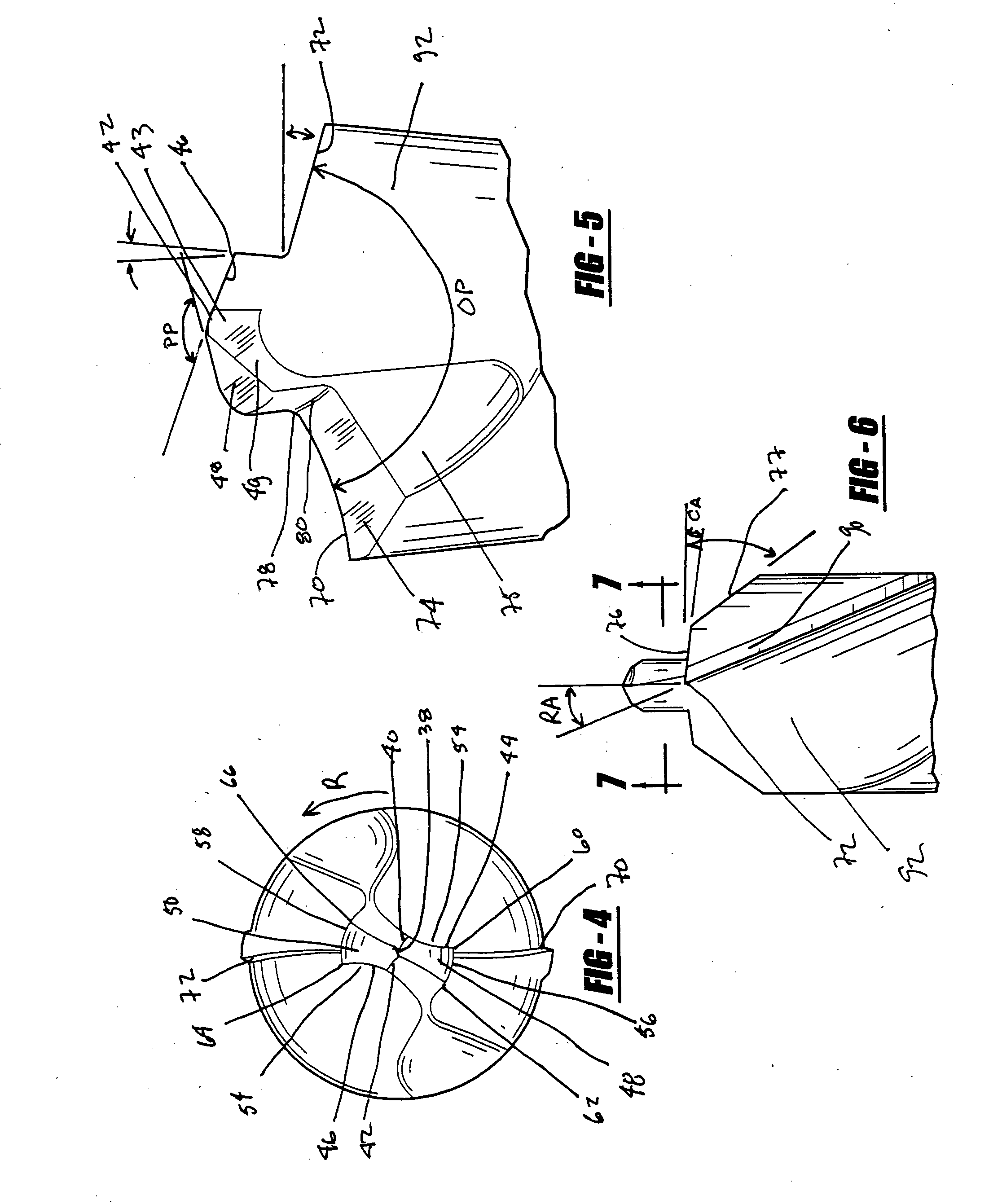Twist drill with a pilot tip
a pilot tip and drill bit technology, applied in the field of drill bits, can solve the problemsunable to accurately locate the center or round hole of the drill bit, and the chisel edge not working or extruding the material in its immediate vicinity, so as to achieve the effect of reducing the resistance of the drill bit passage through the workpiece, reducing the resistance of the drill bit passage, and improving the accuracy of drilling
- Summary
- Abstract
- Description
- Claims
- Application Information
AI Technical Summary
Benefits of technology
Problems solved by technology
Method used
Image
Examples
Embodiment Construction
[0021] The following description of the preferred embodiment(s) is merely exemplary in nature and is in no way intended to limit the invention, its application, or uses.
[0022] Referring to FIG. 1, a drill bit 20 is shown for cutting a variety of material such as metal, wood, plastics, plastics, piping and tubing. The drill bit 20 has a longitudinal axis X-X and is manufactured from high-speed steel. The drill bit 20 has a shank end 22, a working end 24 and a fluted portion 26 interposed between the shank end 22 and the working end 24. The shank end 22 includes a substantially cylindrical shank 28 that extends from one end of the drill bit 20 to the fluted portion 26. The shank 28 connects to a tool holder (not shown) of a power tool. The shank 28 may have one or a plurality of axially parallel flat chamfers arranged equi-angularly around its circumference to improve the connection with a tool holder of a power tool.
[0023] The fluted portion 26 is formed with a pair of helical flut...
PUM
| Property | Measurement | Unit |
|---|---|---|
| angle | aaaaa | aaaaa |
| angle | aaaaa | aaaaa |
| angle | aaaaa | aaaaa |
Abstract
Description
Claims
Application Information
 Login to View More
Login to View More - R&D
- Intellectual Property
- Life Sciences
- Materials
- Tech Scout
- Unparalleled Data Quality
- Higher Quality Content
- 60% Fewer Hallucinations
Browse by: Latest US Patents, China's latest patents, Technical Efficacy Thesaurus, Application Domain, Technology Topic, Popular Technical Reports.
© 2025 PatSnap. All rights reserved.Legal|Privacy policy|Modern Slavery Act Transparency Statement|Sitemap|About US| Contact US: help@patsnap.com



